Four charges are arranged at the comers of a square ABCD of side d, as shown in Fig.
a. Find the work required to put together this arrangement
b. A charge q0 is brought to the centre E of the square, the four charges being held fixed at its corners. How much extra work is needed to do this?n 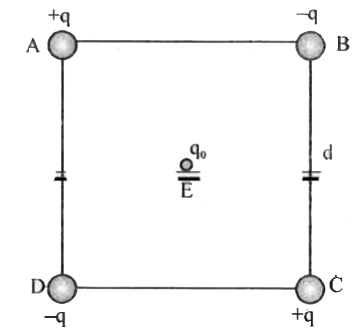 Solution in Tamil
Solution in Tamil
Since the work done depends on the final arrangement of the charges, and not on how they are put togeth calculate work needed for one way of putting the charges at A, B, C and D. Suppose, first the charge +q is brought to A, and then the charges -q, +q, and -q are brought to B, C and D, respectively.
The total work needled oan be caloulated in steps:
i. Work needed to bring charge +q to A when no charge is present elsewhere, this is zero. i. Work nooded to bring - q to B when + q is at A. This is given by (charge at B) × (eleectrostatic potential at B due to charge +q at A) =−q×q4πε0d=−q24πε0d
iii. Work needed to bring charge +q to C when +q is at A and - is at B. This is given by (charge at C) × (potential at C due to charges at A and B)
=+q(+q4πε0d√2+−q4πε0d)=−q24πε0d(1−1√2)
iv. Work needed to bring -q to D when +q at A, - q at B, and + q at C. This is given by (charge at D) × (potential at D due to charges at A, B and C)
=−q(+q4πε0d+−q4πε0d√2+q4πε0d)=−q24πε0d(2−1√2)
Add the work done in steps (i), (ii), (iii) and (iv). The total work required is =−q24πε0d{(0)+(1)(1−1√2)+(2−1√2)}=−q24πε0d(4−√2)
The work done depends only on the arrangement of the charges, and not how they are assembled. By definition, this is the total electrostatic energy of the charges.
b. The extra work necessary to bring a charge q0 to the point E when the four charges are at A, B, C and D is q0× (electrostatic potential at E due to the charges at A, B, C and D). The electrostatic potential at E is clearly zero since potential due to A and C is cancelled by that due to B and D. Hence no work is required to bring any charge to point E.
Topper's Solved these Questions
- BOOK - NEW JOYTHI PUBLICATIONCHAPTER - ELECTROSTATIC POTENTIAL AND CAPACITANCEEXERCISE - Solution To Exercises From Ncert Texation36videos
ELECTROSTATIC POTENTIAL AND CAPACITANCE
- BOOK - NEW JOYTHI PUBLICATIONCHAPTER - ELECTROSTATIC POTENTIAL AND CAPACITANCEEXERCISE - Practice Problems For Self Assessment23videos
ELECTROSTATIC POTENTIAL AND CAPACITANCE
- BOOK - NEW JOYTHI PUBLICATIONCHAPTER - ELECTROMAGNETIC WAVES EXERCISE - COMPETITIVE EXAM CORNER16videos
ELECTROMAGNETIC WAVES
- BOOK - NEW JOYTHI PUBLICATIONCHAPTER - MAGNETISM AND MATTEREXERCISE - COMPETITIVE EXAM CORNER13videos
MAGNETISM AND MATTER
Similar Questions
Two charges 5×10−8Cand−3×10−8C are located 16 cm apart. At what point(s) on the line joining the two charges is the electric potential zero ? Take the potential at the infinity to be zero.
06:15View SolutionCalculating the work done in eV in carrying a charge +e Coulomb through a potential rise of 100 volts. (1.0eV=1.6×10−19joules)
02:18View SolutionIf the total electromagnetic energy falling on a surface is U, then the total momentum delivered (for complete absorption) is
05:30View SolutionChoose the correct statement .
04:14View SolutionFour charges are arranged at the corners of a square ABCD, as shown in the adjoining figure, The force on a positive charge kept at the centre O is
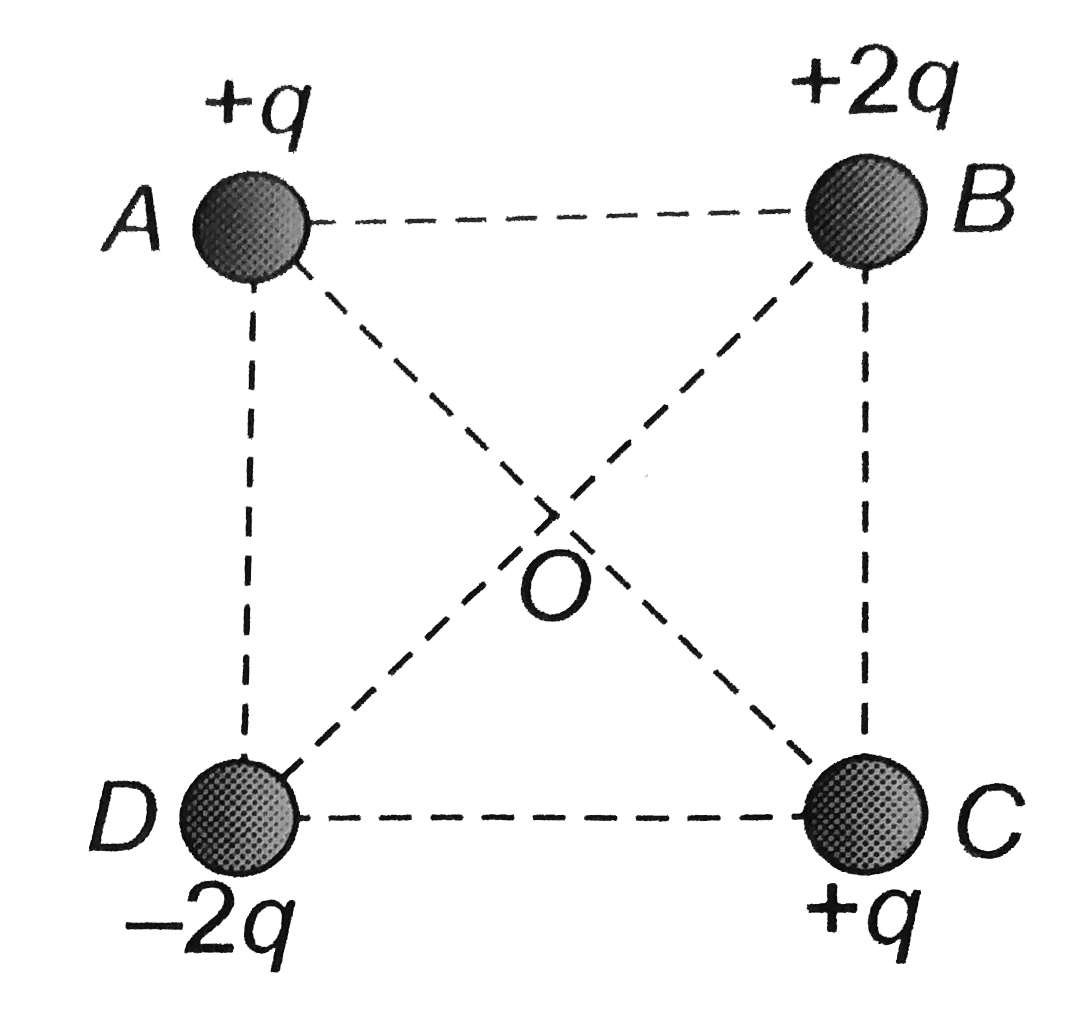 07:04View Solution
07:04View SolutionFour charges are arranged at the corners of a square ABCD, as shown. The force on a =ve charge kept at the centre of the square is -
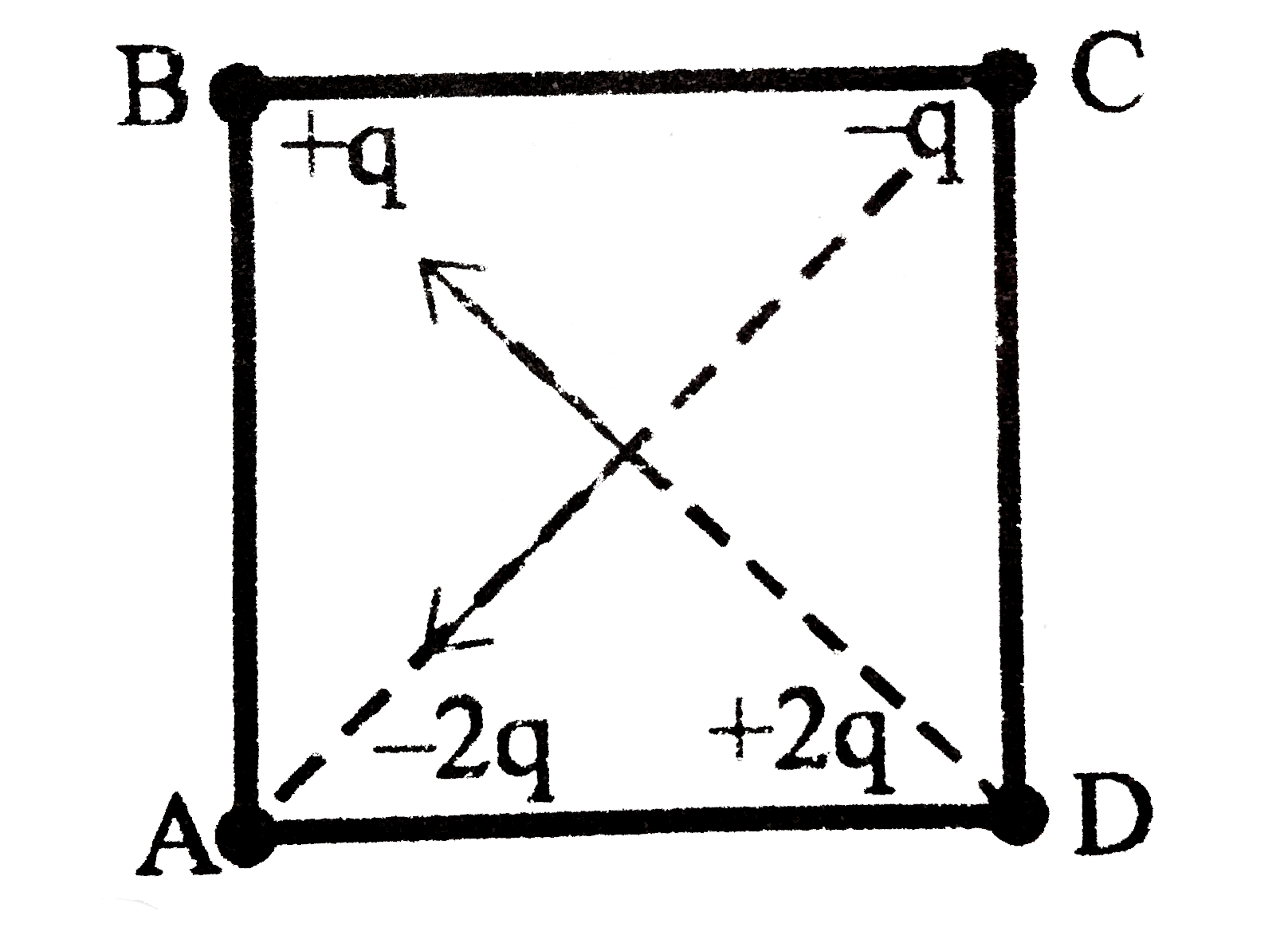 15:49View Solution
15:49View SolutionFour charges are arranged at the corners of a square ABCD pf side d, as shown in Fig. Find the work required to put together this arrangement (b) A charge q0 brought to the center E of the square, the four charges being held fixed at the corners . How much extra work in needed to do this ?
 08:16View Solution
08:16View SolutionFour charges are arranged at the corners of a square ABCD, as shown. The force on a positive charge kept at the centre of the square is
 09:20View Solution
09:20View Solutionचित्र 2.15 में दर्शाए अनुशार चार आवेश भुजा d वाले किसी वर्ग ABCD के शीर्षों पर व्यवस्थित किए गए हैं। (a) इस व्यवस्था को एक साथ बनाने में किया गया कार्य ज्ञात कीजिए । (b) कोई आवेश q0 वर्ग के केंद्र E पर लाया जाता है तथा चारों आवेश अपने शीर्षों पर दृढ़ रहते हैं । ऐसा करने के लिए कितना अतिरिक्त कार्य करना पड़ता है ?
 06:54View Solution
06:54View Solutionचित्र 3.19 में प्रदर्शित चार आवेशों को a भुजा वाले वर्ग के चारो कोनो पर व्यवस्थित करने में कितना कार्य सम्पादित होगा अन्य आवेश q को अन्नत से वर्ग के केंद्र O तक लाने में कितना कार्य किया जायेगा यदि चारू कोनो पर आवेश स्थिर रहे
 08:56View Solution
08:56View SolutionFour charges are arranged at the corners of a square ABCD of side d. as shown in fig. Find the work required to put together this arrangement. (b) A charge q0 is brought to the centre of the square, the four being held fixed at its corners. How much extra work is needed to do this ?
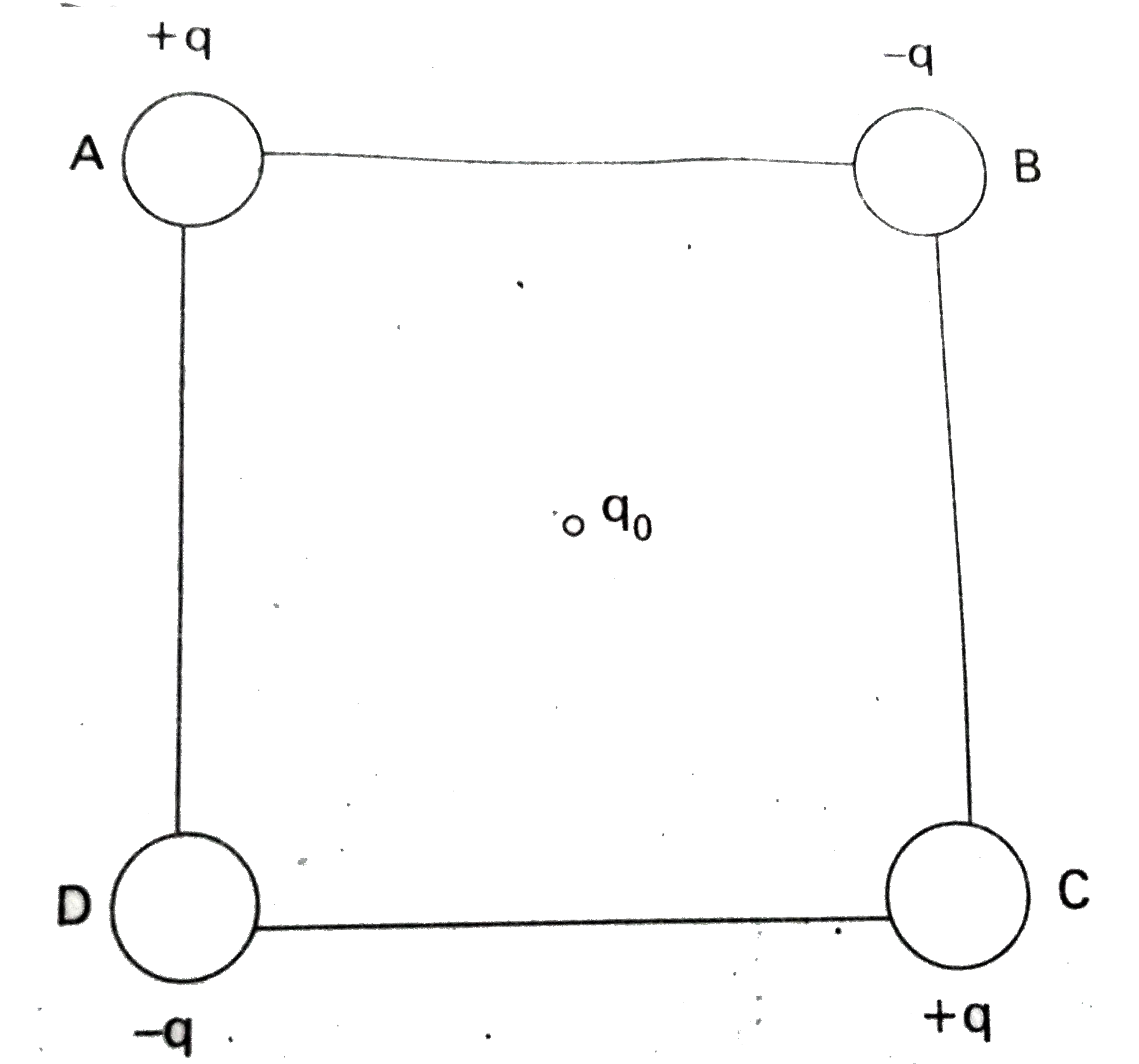 04:06View Solution
04:06View Solutionचित्र में दर्शाए अनुसार चार आवेश d भुजा वाले किसी वर्ग ABCD के शीर्षों पर व्यवस्थित किए गए है । (a). इस व्यवस्था को एक साथ बनाने में किया गया कार्य ज्ञात कीजिए (b) कोई आवेश q0 वर्ग के केंद्र E पर लाया जाता है तथा चारों आवेश अपने शीर्षों पर दृढ़ रहते हैं। ऐसा करने के लिए कितना अतिरिक्त कार्य करना पड़ता है?
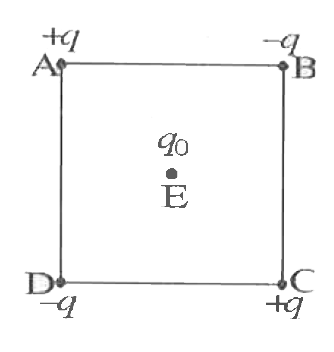 04:03View Solution
04:03View Solutionचित्र में दर्शाए अनुसार चार आवेश भुजा वाले किसी वर्ग ABCD के शीर्षों पर व्यवस्थित किए गए हैं।
इस व्यवस्था को एक साथ बनाने में किया गया कार्य ज्ञात कीजिए।
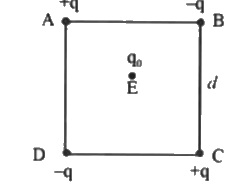 09:23View Solution
09:23View SolutionFour charges are arranged at the corners of the square PQRS of side a as shown in the figure . (a) Find the work required to assemble these charges in the given configuration . (b) Suppose a charge q is brought to the center of the square by keeping the four charges fixed at the corners how much extra work is required for this ?
04:43View SolutionFour charges are arranged at the corners of a square ABCD of side d, as shown in Fig. 2.15.(a) Find the work required to put together this arrangement. (b) A charge q_(0) is brought to the centre E of the square, the four charges being held fixed at its corners. How much extra work is needed to do this?
05:38View Solution

